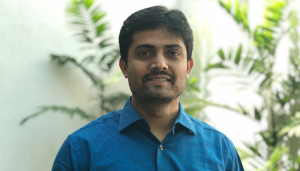With the emergence of the Internet of Things, over the past couple of years, there has been a significant focus on the integration of large scale wireless communication technologies with medical care. And more specifically, the focus has been on the development of tiny, wireless sensor devices that can be either implanted in the body or integrated with wearable clothing. The challenge however lies in the development of sensor nodes that are miniscule in size, consume low power and cost less too.

Award-Winning Paper
At the recently concluded 32nd international conference on VLSI Design and 18th international conference on Embedded Systems at New Delhi, Prof. Abhishek Srivastava of the Centre for VLSI and Embedded Systems Technologies (CVEST) at IIIT-H walked away with the Best Paper award for the paper titled “Analysis and Design of Low Phase Noise LC Oscillator for Sub-mW PLL-Free Biomedical Receivers”. Co-authored by Maryam Shojaei Baghini of IIT Bombay, the paper presents the design of a low phase noise LC oscillator (LCO) for a phase locked loop (PLL)-free receiver (RX), which is used for wireless sensor nodes based healthcare applications. Based on a detailed analysis in the paper, the authors have shown how a low power cross coupled LCO can be optimally designed for Medical Device Radiocommunication (MedRadio) band, which is a recommended communication band for biomedical applications. Revealing a significant reduction in power consumption of only 140 micro-W power by the LCO, it is suitable for various biosignal communication.
Conference of International Repute
The conference is sponsored by VLSI Society of India (VSI) and is recognized as a ‘Sister Conference’ of the Design Automation Conference. The conference website refers to how “the Design Conference started as a simple idea in 1985: to sense the level of VLSI activities in India with a focus on engineering education & research.” It has now grown into a huge community that includes the likes of Multinational Industries, Academic contributors and Government bodies around the globe. Speaking about the conference and the call for papers to be presented, Prof. Srivastava says, “The selection process was very competitive. Only 26% of full papers and 8% of interactive presentation (poster) papers were accepted. It is an honour for us since it is the best International conference for VLSI design, which is held in India.”
CVEST
When the Center for VLSI and Embedded Systems Technologies (CVEST) was established in 2002, its aim was to build low cost indigenous technologies, through research and development, in the areas of VLSI design and Embedded Systems. With the path-breaking work presented in the paper, demonstrating usefulness in building low power wireless sensor nodes with specific applications in healthcare and other IoT devices, CVEST certainly seems on track.


